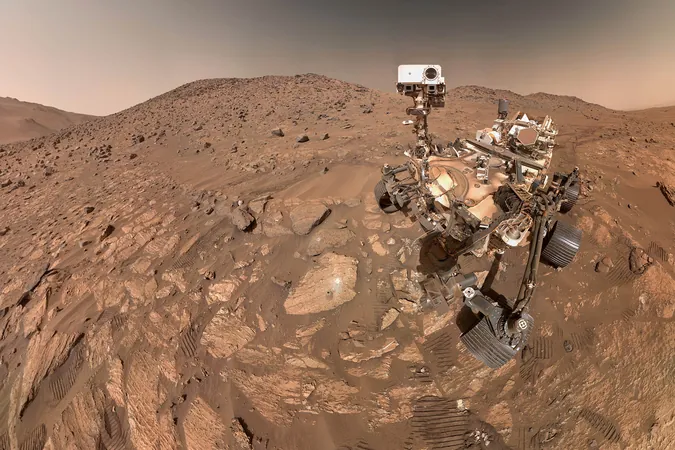
Martian Wonders: NASA's Perseverance Rover Sparks New Hope in Search for Life
2025-09-14
Author: Yu
NASA's quest for life on Mars has taken an exciting turn with the Perseverance rover's recent findings, igniting discussions among scientists and space enthusiasts alike. Could the red planet be harboring signs of microbial life?
The rover, a marvel of engineering, has transmitted stunning images showcasing unusual spots on Martian rocks that strongly hint at microbial origins. These potential biosignatures have sent ripples of excitement through the astrobiology community, prompting researchers worldwide to examine whether these features could also be products of geological processes.
A Philosophical Quest: Are We Alone?
While the question of extraterrestrial life evokes poetic musings reminiscent of David Bowie's famous inquiry, scientists tackle a more profound, philosophical dilemma: can we ever truly confirm the existence of life on Mars? With a history rich in speculation—dating back to ancient texts—Mars has emerged as a prime candidate for extraterrestrial exploration, given its Earth-like traits.
Once rich in water and possessing a thicker atmosphere, Mars lost much of its protective magnetic shield, paving the way for harsh solar winds that ravaged its surface. Joel Hurowitz, an associate professor at Stony Brook University, describes the planet as 'a mummified Earth,' suggesting that its microbial past may still be preserved.
The Perseverance Rover: A Geological Detective
Navigating the Jezero crater, a former river delta, the Perseverance rover inches forward, analyzing rock formations and collecting samples that could hold the key to understanding Mars' ancient environment. Over four years, it has drilled 30 core samples, carefully stored for potential return to Earth.
Sanjeev Guptafrom Imperial College London notes that the samples, taken from riverbed sediment, are prime candidates for harboring microbial evidence. However, definitive proof remains elusive; without fossils, claims of life will remain unverified until these samples can be studied under Earth’s more sophisticated analytical tools.
Challenges Ahead: The Road to Sample Analysis
Despite budget cuts impacting NASA's projects, acting head Sean Duffy remains optimistic that these samples can be returned to Earth for further examination. Scientists like Pamela Knoll emphasize the challenge ahead. Even with tangible samples, distinguishing between biological and non-biological processes is fraught with ambiguity.
Knoll's research at the University of Edinburgh seeks to establish a baseline for rock appearances in lifeless environments, highlighting the difficulty in proving absence of life. "On Earth, it's nearly impossible to find areas void of any life," she remarks, pointing out that even in extreme environments, life often finds a way.
A Future of Possibilities
As Perseverance continues its exploration, a strict protocol ensures that Earthly contaminants do not compromise the Martian environment. Scientists are keenly aware of how resilient life can be; even fungi managed to survive the harsh conditions of space on the Mir space station.
If NASA successfully retrieves these samples, humanity will edge closer to unlocking the mysteries of life’s origins—not just on Earth but potentially beyond our planet. The relentless pursuit of answers to the age-old questions about life's existence in the universe will undoubtedly continue, inspiring future generations of explorers.



 Brasil (PT)
Brasil (PT)
 Canada (EN)
Canada (EN)
 Chile (ES)
Chile (ES)
 Česko (CS)
Česko (CS)
 대한민국 (KO)
대한민국 (KO)
 España (ES)
España (ES)
 France (FR)
France (FR)
 Hong Kong (EN)
Hong Kong (EN)
 Italia (IT)
Italia (IT)
 日本 (JA)
日本 (JA)
 Magyarország (HU)
Magyarország (HU)
 Norge (NO)
Norge (NO)
 Polska (PL)
Polska (PL)
 Schweiz (DE)
Schweiz (DE)
 Singapore (EN)
Singapore (EN)
 Sverige (SV)
Sverige (SV)
 Suomi (FI)
Suomi (FI)
 Türkiye (TR)
Türkiye (TR)
 الإمارات العربية المتحدة (AR)
الإمارات العربية المتحدة (AR)